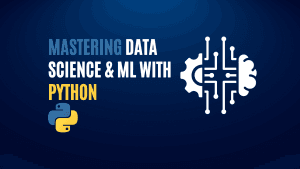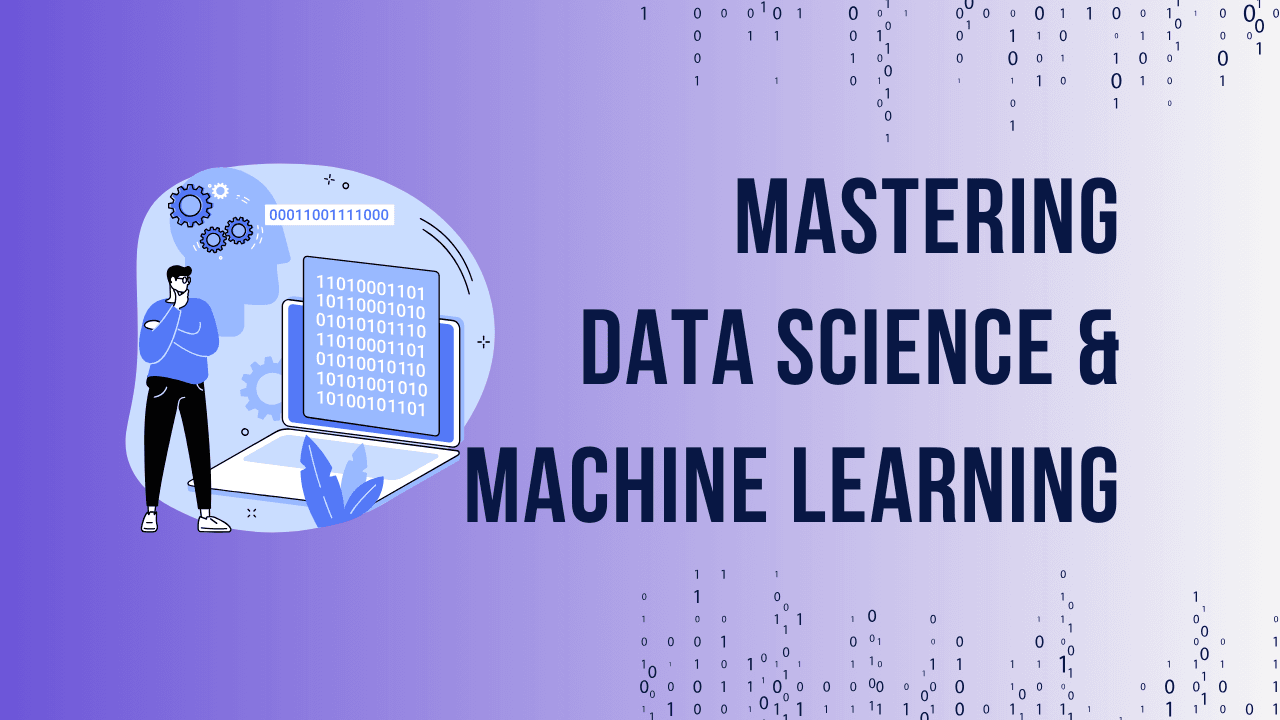Data Science has rapidly become one of the most sought-after fields in the modern digital economy. But what exactly is Data Science, and how central are Python and programming to it? This article aims to explore the role of Python and programming in Data Science, addressing whether these skills are essential or if other components hold equal importance.
Ready to take you Data Science and Machine Learning skills to the next level? Check out our comprehensive Mastering Data Science and ML with Python course.
The Core Components of Data Science
Overview of Data Science
Data Science is an interdisciplinary field that combines statistical analysis, data processing, machine learning, and domain expertise to extract meaningful insights from data. It involves a wide range of activities, from data collection and cleaning to model building and interpretation.
Importance of Statistical Analysis
Statistical analysis forms the backbone of Data Science. Without a solid understanding of statistics, interpreting data correctly becomes a challenge. Concepts like probability, distributions, and hypothesis testing are crucial for making data-driven decisions.
Data Wrangling and Cleaning
Data is rarely clean or in a usable format when first acquired. Data wrangling, the process of cleaning and transforming raw data into a structured format, is an essential skill in Data Science. This process often takes up a significant portion of a data scientist’s time.
Data Visualization Techniques
Communicating insights effectively is key to the success of any data-driven project. Data visualization techniques, such as using graphs, charts, and dashboards, help in presenting data in a clear and understandable way to stakeholders.
Ready to take you Data Science and Machine Learning skills to the next level? Check out our comprehensive Mastering Data Science and ML with Python course.
Table of Contents
ToggleOur Students Testimonials:
The Role of Python in Data Science
Introduction to Python
Python is a high-level, general-purpose programming language that has become the de facto standard in Data Science. Its simplicity and readability make it accessible to beginners, while its powerful libraries allow for complex data manipulations.
Why Python is Preferred in Data Science
Python’s popularity in Data Science is due to several factors: its extensive library ecosystem, ease of use, and active community. Libraries like Pandas, NumPy, and Scikit-learn simplify data analysis, machine learning, and statistical operations.
Python Libraries for Data Science
Python’s rich library ecosystem is one of its biggest strengths. Pandas handles data manipulation and analysis, NumPy deals with numerical operations, Matplotlib and Seaborn create visualizations, and Scikit-learn provides tools for machine learning. These libraries streamline the workflow of data scientists.
Programming in Data Science
Overview of Programming in Data Science
Programming is a critical skill in Data Science. It allows data scientists to automate tasks, build models, and perform complex analyses. Python, R, and SQL are some of the most commonly used programming languages in the field.
The Need for Programming Skills
While tools and platforms offer some automation, programming skills remain essential for customizing solutions, optimizing performance, and handling large-scale data processing. The ability to write efficient code can significantly enhance a data scientist’s productivity.
Other Programming Languages Used in Data Science
Though Python is dominant, other languages like R and SQL also play crucial roles. R is preferred for statistical analysis and visualization, while SQL is essential for database management and querying.
Is Data Science All About Programming?
The Importance of Non-Programming Skills
While programming is important, it is not the only skill needed in Data Science. Analytical thinking, problem-solving, and domain knowledge are equally crucial. Understanding the business context and communicating insights effectively are key components of a successful data science project.
Collaboration with Domain Experts
Data scientists often work closely with domain experts to ensure that the analysis is relevant and actionable. This collaboration helps in aligning data-driven insights with business goals and strategies.
The Role of Analytical Thinking
Analytical thinking is at the heart of Data Science. The ability to interpret data, recognize patterns, and make informed decisions is what sets successful data scientists apart. This skill often requires a deep understanding of the problem domain, beyond just coding.
Case Study: Python’s Impact on a Data Science Project
Project Overview
Consider a project where a company wants to optimize its supply chain using data science. The goal is to reduce costs while maintaining product availability.
How Python Streamlined the Process
Python, with its extensive libraries and ease of use, enabled the data science team to clean the data, build predictive models, and visualize the results efficiently. The use of machine learning algorithms in Python helped in accurately forecasting demand.
Results and Impact
As a result, the company saw a 15% reduction in inventory costs and a 10% improvement in order fulfillment times. This case study illustrates how Python can be a powerful tool in delivering tangible business outcomes.
Common Misconceptions About Data Science
Misconception 1: Data Science is Just About Coding
Many believe that Data Science is solely about coding. However, this view overlooks the importance of statistical analysis, domain knowledge, and communication skills in the field.
Misconception 2: Python is the Only Language You Need
While Python is a versatile tool, relying on it exclusively may limit a data scientist’s effectiveness. Other languages like R and SQL, along with knowledge of tools like Tableau, can be equally valuable.
Misconception 3: Data Science is Only for Techies
Data Science is not just for those with a technical background. With the right training and a strong analytical mindset, individuals from various disciplines can excel in this field.
Frequently Asked Questions (FAQs)
How much programming is needed in Data Science?
While programming is important, it’s not the only skill required in Data Science. A good balance of programming, statistical knowledge, and domain expertise is needed.
Is Python the only programming language for Data Science?
No, Python is not the only programming language used in Data Science. R, SQL, and Java are also commonly used, depending on the specific needs of a project.
Can I become a Data Scientist without a strong programming background?
Yes, it’s possible to become a Data Scientist without a strong programming background, especially with the use of tools and platforms that automate many tasks. However, learning to code can significantly enhance your capabilities.
Ready to take you Data Science and Machine Learning skills to the next level? Check out our comprehensive Mastering Data Science and ML with Python course.



